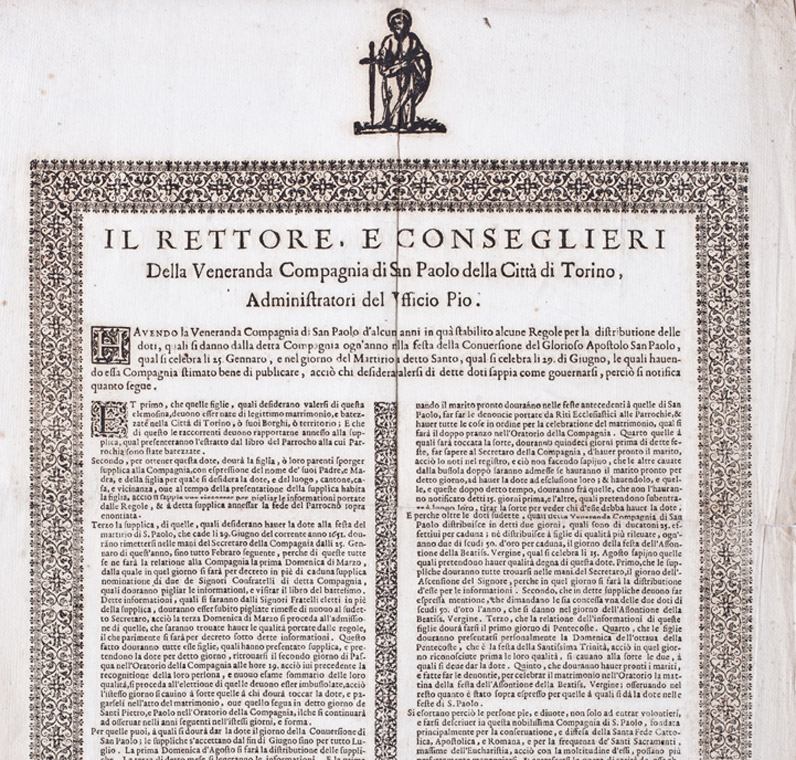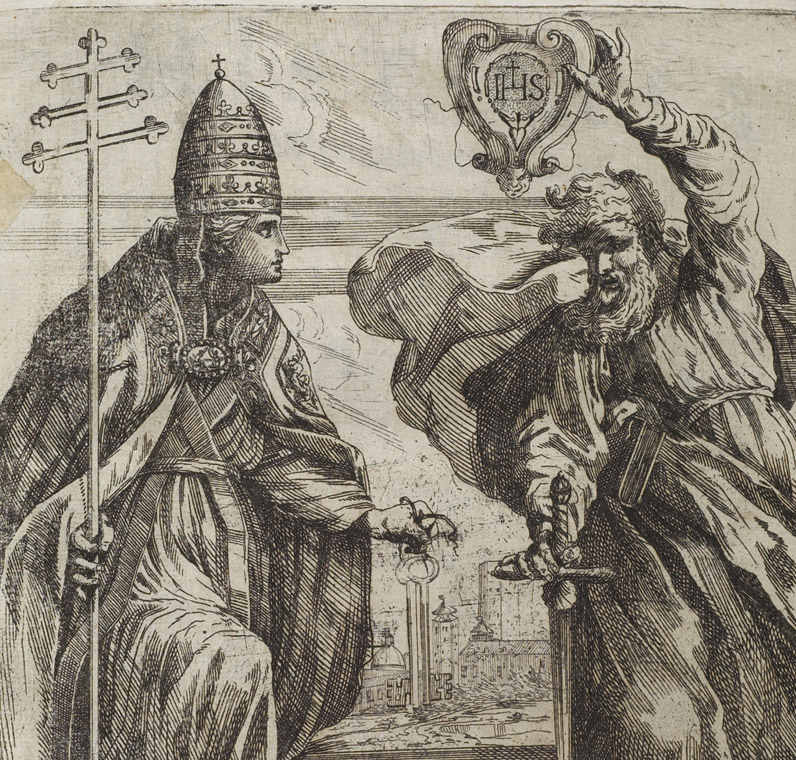The history of the Compagnia di San Paolo has its roots in 16th century Turin, when on 25 January seven citizens of the town founded the confraternity they named ‘Compagnia della Fede’ and dedicated to St Paul with the double aim of assisting the inhabitants of the city affected by economic decline – in the form of alms and visiting their homes – and of keeping the rise of Protestantism at bay.
Towards the end of the 16th century the Confraternity established the first so-called ‘Opere’ (which today would be called charitable organisations) for social and humanitarian purposes: in 1579 the city’s ‘Monte di Pietà’’ which lent out small sums in exchange for some small personal possession in pawn, and in 1589, with a new focus on the plight of women, the ‘Casa del Soccorso’ or ‘Refuge’, which took in girls from the poorest families and gave them a schooling. In 1595 the ‘Ufficio Pio’ (‘Office of Pious Works’) was founded to oversee all the charitable work undertaken by the Compagnia: financial help to those who had fallen on hard times, the sick and the indigent; religious assistance; the provision of dowries for the girls in the ‘Casa del Soccorso’ and the payment of their school fees. Later, in 1683, the so-called ‘Casa del Deposito’ was established which took in women who had been subjected to sexual exploitation and violence.
Subsequently the Compagnia also contributed to the ‘Collegio dei nobili convittori’, a boarding school for the education of the sons of moneyed families, and the ‘Albergo di virtù’ which prepared beggars for employment by training them in mechanical and manufacturing skills (linking up with the Duke of Savoy’s plan to introduce the silk industry into Piedmont). In the middle of the 17th century the Compagnia di San Paolo promoted the setting up of the ‘Ospedale di carità’’, a charitable hospital of which both the management and the financing were shared by the Compagnia, and, in the following century, it funded the creation of the ‘Ospedale dei pazzi’ or asylum for the mentally infirm.
Over the course of the 17th century the Compagnia di San Paolo strengthened both its internal organisational structure and the role it played in society, with intensified financial activity culminating in the Compagnia’s taking over responsibility for the administration of the public debt in 1683 with the establishment of the ‘Monte della Fede’, run under the auspices of the ‘Monte di Pietà’’. The political and economic crisis at the end of the 18th century also affected the Compagnia: under the republican government run by the French it lost control of the various institutions of the ‘Opere’ and its own property and ended up being suppressed, in 1802, and replaced with publically appointed bodies which nevertheless managed to ensure a continuity with past practice and experience.
With the restoration of the monarchy the Compagnia was re-established and its activities increased: it took on the management of the ‘Monte di Pietà’ which charged interest, in addition to the original ‘Monte di Pietà’ which was free, while, in addition to the former activities of the ‘Ufficio Pio’, it was also given responsibility, between 1824 and 1851, for the provision of health services for the city’s poor, involving basic medical care but also the supply of medicines and specialist treatments.










